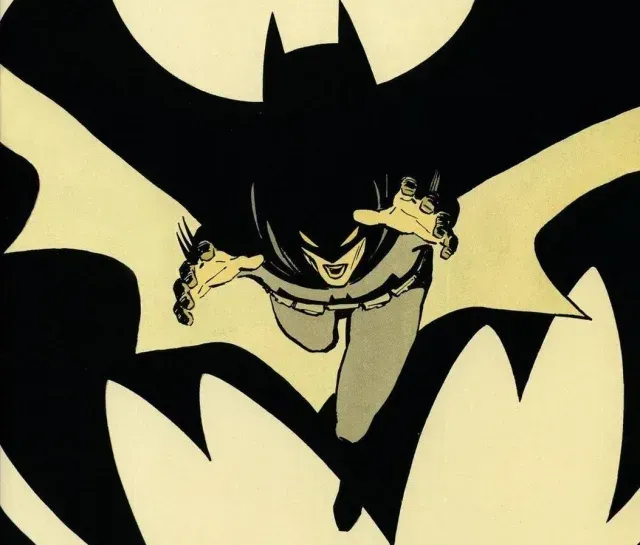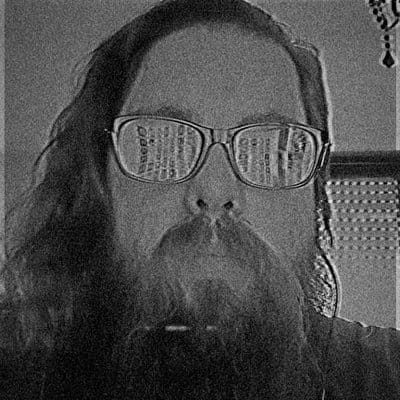
Reading comics is beautiful –but it can also feel overwhelming because of the sheer number of titles and creators. In fact, with a few exceptions, getting into Western comics is much trickier than getting into most manga. Dragon Ball starts at chapter one; but if I want to read Batman… do I have to go all the way back to 1939?
This guide took shape in my head in December 2024, when I decided to give my mother –who grew up with Adam West and has never missed a Batman movie– Batman: Year One for Christmas. What I believe is the best starting point for an adult who has never read comics.

Who is Batman?
In 1939 –specifically in Detective Comics #27– Bruce Wayne/Batman was born. The character was created by Bob Kane and Bill Finger (the writer who, for decades, was credited second even though he should appear first) and a controversial figure in comics, Bob Kane (artist, playboy, and a bit of a con man). A character with pulp undertones that broke the hero mold as it existed back then: no superpowers, a defining personal tragedy, and the use of fear as a weapon against his enemies.
The parallel with Zorro is massive; it even becomes part of the character's lore, as it's the movie Bruce watches with his parents before the most consequential murder in comics history. In his first appearance, Batman takes on Gotham's organized crime –a fight that would recur throughout his history.

For over 85 years –through dozens of writers and artists– the Dark Knight has been depicted in countless ways, from the absurd and cartoony to the bleak and violent. That's where a reading guide becomes necessary. My selection here is aimed mainly at readers who have never picked up a Batman comic and want the character's more adult side, focusing on moments I consider essential to forging his personality.
Batman: Year One (1987)

Frank Miller –who has delivered more than a few home runs–wrote this "new" origin. By then the character had already matured beyond his 1960s incarnation thanks to the 1970s run by Dennis O'Neil (writer) and Neal Adams (the artist who nailed Batman's visual identity), which introduced a lot of crucial lore. In Year One, Miller and artist David Mazzucchelli build on that 70s-80s groundwork and rebuild the character with the grit and noir sensibility of those decades' cinema.
Bruce Wayne returns to Gotham after an intense training tour around the world. He finds a city reeking of crime (with the Falcone family at the top) and puts his plan into motion, becoming Gotham's vigilante protector. In parallel we meet lieutenant Gordon, a foundational figure in the comics, who has to deal with internal police corruption and finds in Batman a partner to help set the city straight.

We also meet characters at a very early stage who will later belong to the essential cast of allies and rogues –like Selina Kyle (Catwoman) and Harvey Dent (Two-Face). The ending even hints at the imminent arrival of someone called The Joker…
Mazzucchelli's art is phenomenal: the action and atmosphere he creates are essential for the script to pull us through a story that reads more like hard-boiled crime than a conventional superhero tale.
Batman: The Killing Joke (1988)

Where to begin. A beautiful, brutal story written by one of the medium's finest pens, Alan Moore, with art by Brian Bolland. This Batman carries over traits from Miller and O'Neil's takes, with a strong focus on the second most important figure in this bat-universe: The Joker.

After several run-ins with Batman –and consumed by his obsession with him– our harlequin prince of crime devises a plan to prove that the difference between what he became and an ordinary person is just "one bad day". To do that he abducts, humiliates, and harms the Gordons: Barbara is shot and James is subjected to psychological torture, all to make his point and try to break Batman.
One of the story's lingering ideas is that a "bad day" was the trigger not only for Joker's origin but also in Bruce's life. It's one of the Dark Knight's rawest stories. An essential read.
Arkham Asylum: A Serious House on Serious Earth (1989)

It's funny that my recommendations cluster in 1987, '88, and '89, but it's important to note how Miller's work opened the door to these more adult stories –plus this was a prime era for comics, with top creators at their peak and some rookies landing early hits.
In his script, Grant Morrison –the enfant terrible of 80s/90s comics– swings the Batman universe into a new genre. If Year One is a crime drama and The Killing Joke reads like a thriller, then Arkham Asylum is horror.

Marketed as a "graphic novel", Arkham Asylum: A Serious House on Serious Earth shocks from cover to final page thanks to Dave McKean's twisted, powerful art (he's also known for his Sandman covers). In this pitch-black tale, the inmates of the psychiatric hospital –populated by Batman's enemies– riot and take the staff hostage. Led by The Joker, they demand the Dark Knight enter alone, or they'll start killing hostages one by one.
Batman dives into a nightmare, facing his most iconic enemies in a story that digs into the characters' psyche, symbolism, and mythology. No question: it's a comic meant to unnerve you and drag you into madness.
Batman: The Long Halloween (1996 - 1997)

One of the most important titles for me. Jeph Loeb (writer) and Tim Sale (artist) combine everything that makes the Dark Knight special and place him in the perfect context for a story that ends up having it all. Batman is a detective and a vigilante, and in The Long Halloween we see both facets in a hard-boiled case.
It's set not long after Year One and spans a full year in the lives of Bruce/Batman and Gotham. The Falcone crime family returns to center stage as a member is murdered on every holiday by a mysterious killer known as Holiday. While Batman and Gordon investigate, something else happens in Gotham's streets.

Petty crooks begin morphing into the villains we know from the Batman mythos. If there's something we love about Batman, it's his rogues' gallery –and this book celebrates it: we see The Riddler, Poison Ivy, Scarecrow, and The Mad Hatter working for the Falcones, and Harvey Dent finally turning into Two-Face.
Batman: The Dark Knight Returns (1986)

Before writing Batman's new origin, Frank Miller wrote his ending –a landmark of superhero comics, full of elements we'd see repeated many times afterward because they started here. Miller not only writes but also brings his ultra-brutal art to a story with not a single panel too many or too few.
We meet a retired, battered 55-year-old Bruce Wayne. It's been a decade since he last wore the cowl (after the death of Robin, Jason Todd), and Gotham is orphaned and sinking into everything he tried to prevent. Bruce hides in alcohol and racing his car collection… but the pull to be Batman and help the city he loves is stronger.
Over the course of the book, Batman faces old enemies –by now they're like high-school classmates, given how well they know each other –but he also wages war against Gotham's new breed of criminals, the Mutants. He won't be alone: we get the debut of Carrie Kelley, one of the coolest Robins in the bat-universe, and appearances from many key figures in his life. And, of course, there's Superman –perhaps their most memorable confrontation.

These are, to me, the five most important Batman books to read, in the order I'd recommend to someone who's never read the character. There's obviously much more to recommend, but let's stick with these essentials for now –and continue soon.

